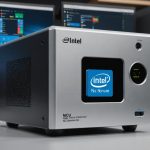Overview of Dual Booting
Dual booting allows you to install and use two operating systems on the same computer, providing versatility and a tailored computing experience. Primarily, it involves maintaining both systems on separate partitions, enabling users to choose which to utilise upon startup. This practice caters to both functionality and experimentation, often seeing Windows and Linux as a popular combination due to their distinct offerings.
The benefits of dual booting are manifold. Users can exploit the expansive software environment of Windows while simultaneously engaging with Linux’s open-source flexibility and robust security features. This setup can be particularly advantageous for developers, gamers, or anyone who requires diverse operating conditions for varied tasks.
In the same genre : Top techniques for building a secure and high-performance file server using intel nuc and windows server 2022
Embarking on the dual booting journey requires a fundamental understanding of the process and prerequisites involved. Initially, ensure adequate disk space; both systems need their allotted storage space on dedicated partitions. It’s important to prepare installation media and a backup of essential files. Users should first install Windows, followed by Linux, thanks to the latter’s seamless integration with existing operating systems. This meticulous process, though somewhat technical, affords users the opportunity to shape their computing environment to meet precise needs, making dual booting an appealing avenue for versatile digital interaction.
System Requirements
Understanding the hardware requirements is crucial for ensuring smooth performance when dual booting Windows 10 and Linux Mint on an HP Pavilion. First, let’s delve into the minimum hardware specifications needed. For Windows 10, a processor of 1 GHz or faster is required, with 1 GB of RAM for 32-bit or 2 GB for 64-bit systems. A minimum of 16 to 20 GB of free disk space is also essential. Linux Mint’s requirements are modest, needing just 1 GB of RAM and 15 GB of disk storage.
In the same genre : Creating a secure remote work environment: essential tips for harnessing the power of ubiquiti unifi dream machine
While these specifications will get you started, aiming for recommended specifications enhances user experience. For optimal performance, a multi-core processor, 4 GB of RAM, and a solid-state drive (SSD) would significantly improve speed and efficiency of both operating systems.
When considering dual boot compatibility on HP Pavilion laptops, it’s vital to ensure that Secure Boot is disabled in the BIOS, as this can prevent Linux Mint from installing. HP Pavilion’s generally offer adequate hardware to support these processes, making them a reliable choice for users interested in running both Windows and Linux Mint efficiently.
Preparing Your HP Pavilion Laptop
To prepare your HP Pavilion for any major changes, be it installing new software or upgrading the operating system, backing up data is crucial. It ensures that all your important files are safe and accessible should anything go wrong during the process. Before making any significant alterations, copy your files to an external storage device or use cloud services for more robust data protection.
Partitioning the hard drive is an essential step, especially if you plan on dual booting. This involves dividing your drive into separate sections, allowing different operating systems to coexist without interference. To partition your hard drive on an HP Pavilion, you can use built-in tools like Disk Management in Windows. Simply select the drive, shrink it, and create a new partition without erasing existing data.
Creating a recovery drive for Windows 10 on your HP Pavilion is another vital preparation measure. This will help you restore your system to its original state in case of software failures. Use the ‘Create a recovery drive’ utility in Windows, and ensure you have a USB that meets the required specifications. This small step can save a significant amount of trouble in the long run.
Installing Windows 10
In this section, we will guide you through the Windows installation steps and make the process smooth and straightforward. Installing Windows 10 on your device might seem daunting, but with our detailed steps, you can complete the Windows 10 setup with ease. Let us dive into the specifics.
Downloading Windows 10
Before starting the installation process, you need to download the OS. Visit the official Microsoft website and download the Windows 10 installation tool. Ensure your internet connection is stable to avoid any interruption. This tool will allow you to create an installation media for the next step.
Creating Installation Media
Creating a bootable USB drive is crucial. Plug in a USB drive with at least 8GB of space to your computer. Use the Windows installation tool to make this drive bootable. Follow the prompts, ensuring to select ‘create installation media’. This drive will now be primed to install Windows onto any device.
Step-by-Step Installation Instructions
- Insert your prepared USB into the HP Pavilion computer.
- Restart the device and enter the boot menu (typically pressing F9 or ESC during boot).
- Select the USB drive as the boot device.
- Follow the on-screen prompts: choose your language, time, and keyboard preferences.
- Click ‘Install Now’ and insert your Windows product key when prompted to complete the Windows 10 setup.
By following these steps, you ensure a seamless update to Windows 10.
Installing Linux Mint
Installing Linux Mint can be a seamless experience if proper procedures are followed. Begin by ensuring you have a clear understanding of the Linux Mint setup. This involves gathering the necessary files and tools required for the Linux installation steps.
Downloading Linux Mint
To kickstart the process, you will first need to download Linux Mint. Visit the official Linux Mint website and select your preferred version. It’s essential to choose a download option that aligns with your computer’s architecture – typically, 32-bit or 64-bit.
Creating Installation Media
Next, creating a bootable USB drive is crucial for the installation to proceed. Use tools such as Rufus or Etcher to transfer the Linux Mint ISO file onto a USB stick. This step is vital as it allows your computer to boot from the USB and begin the installation sequence.
Step-by-Step Installation Instructions
Once the preparation phase is complete, it’s time for the Linux Mint setup. Insert your bootable USB and restart your computer. During startup, access the boot menu (usually by pressing F12, F2, or Esc) and select the USB boot option. Follow the on-screen installation steps, which will guide you through language selection, partitioning options, and user settings. If installing alongside Windows, use the partitioning tool to ensure both systems can co-exist.
Configuring the Dual Boot Menu
When managing multiple operating systems, the GRUB bootloader serves as a crucial tool. GRUB, short for GRand Unified Bootloader, is the most common bootloader used in dual-boot systems. It is pivotal in presenting a menu to choose between operating systems at startup.
To configure the dual boot menu, you begin by editing the GRUB configuration file. This is located at /etc/default/grub on most Linux distributions. By editing this file, users can adjust default operating systems, menu appearance, and boot order to tailor their boot process. After making changes, remember to update the GRUB settings using the command sudo update-grub to apply modifications effectively.
Despite its utility, boot management can pose challenges. A frequent issue is the GRUB menu not appearing at startup. Typically, this can be resolved by checking the BIOS/UEFI settings to ensure the correct boot order or by recovering GRUB using a live USB. Another common problem is when GRUB fails to recognize one of the operating systems. This can often be addressed by manually updating the configuration file with the necessary system-specific entries.
With these insights, users can navigate the complexities of dual-boot configurations effectively.
Post-Installation Support
After installing a dual boot system, users may encounter common issues that can disrupt their experience. Effective post-installation support is crucial to address these challenges. For example, a frequent problem is bootloader conflicts, where the system fails to recognize both operating systems. The solution often involves repairing the bootloader using tools like Boot Repair or GRUB Customizer, which specialize in resolving such dual booting issues.
Maintenance tips are essential to ensure a seamless dual boot experience. Regularly updating both operating systems helps prevent conflicts and ensures software compatibility. Allocate sufficient storage space and use partition management tools to avoid data corruption. Additionally, create frequent backups of important data to mitigate risks during updates or configuration changes.
For further assistance, users can turn to various resources. Online forums and computer enthusiast communities, such as Reddit or Stack Exchange, offer a wealth of knowledge and practical solutions for dual boot issues. These platforms provide real-world experiences and tips from individuals who have encountered and resolved similar problems. Engaging with these communities can enhance understanding and provide updated solutions as technology evolves. Exploring these support avenues empowers users to tackle post-installation support challenges effectively and maintain a fully functioning dual boot system.
Troubleshooting Common Issues
Navigating a dual boot setup can occasionally present challenges, with common dual boot problems like boot order mishaps topping the list. Addressing these requires a methodical approach to ensure smooth operation.
Start by verifying that your boot order is correctly configured in the BIOS or UEFI settings. Ensure your primary operating system is listed first. If incorrect, rearrange the order to prioritize your desired system. This often solves boot order issues.
Next, investigate the boot menu settings. Sometimes, simply updating or reconfiguring these settings resolves problems. If you’re still facing challenges, inspect the bootloader. A corrupted bootloader can prevent systems from loading correctly. In this case, using a live USB or CD to access the recovery tools might be necessary to repair the bootloader.
For persistent issues, delve into online resources. Numerous forums and tutorials offer step-by-step solutions for specific dual boot troubleshooting concerns, catering to a range of expertise levels. Should these avenues prove unproductive, consider consulting professional support to avoid the risk of data loss or further complications.
In summary, dual boot troubleshooting demands patience and a structured resolution strategy. By following these steps and seeking guidance when necessary, most common dual boot problems can be effectively managed.
User Experiences and Testimonials
Exploring user testimonials about dual booting on HP Pavilion laptops offers valuable personal insights into everyday experiences, benefits, and challenges.
Many users share that the process often starts smoothly with a guiding tutorial, but unexpected compatibility issues can arise. For instance, a common challenge includes drivers not functioning correctly for either operating system. One user recounted how updating the BIOS resolved persistent errors, emphasizing the importance of such maintenance.
Among the bright spots, several users highlighted successful setups due to detailed online guides and forums. They appreciated the flexibility of accessing both Windows and Linux environments without requiring separate devices, which is indispensable for multitaskers.
Dual booting experiences vary, with seasoned users suggesting practical tips such as partition planning ahead of time, backing up important data beforehand, and maintaining consistent updates for smoother performance. Community experiences underscore that while initially daunting, persistence and regular research can turn challenges into streamlined operations.
Overall, these shared experiences and nuggets of wisdom shed light on the practical nuances of dual booting—allowing for informed decision-making. Those considering this setup benefit from knowing that while there are hurdles, there are reliable solutions as well from those who’ve successfully navigated the terrain.






